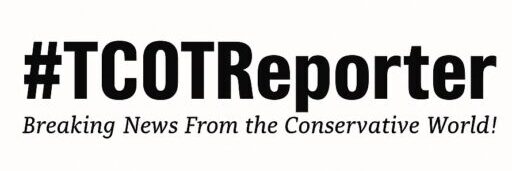Presidents come and go. Bureaucracies metastasize.
When Barack Obama left the White House in January 2017, the peaceful transfer of power looked orderly from the outside. Behind the curtain, the federal apparatus was already staging its quiet resistance.
For decades, presidents have tried to install loyalists as political appointees — and most of them packed up when their boss did. But during the 2016–2017 transition, something new happened: the rise of “burrowing.” Hundreds of political operatives were converted into permanent civil service roles, embedding the ideology of the outgoing administration into agencies meant to serve the next one.
The Washington Times later confirmed at least 78 Obama appointees successfully “burrowed” into career posts across multiple departments — a number the Government Accountability Office (GAO) later verified in its 2017 report on transition ethics and staffing. That figure only accounts for the ones caught by oversight reviews; internal OPM audits suggested the real number was far higher. These conversions granted the new “career” employees near-total protection from removal — even by the incoming president.
In November 2016, GovExec reported that congressional watchdogs were already worried. Sen. Ron Johnson requested weekly updates on appointee conversions to monitor “politicized hiring” during the lame-duck months. By February 2017, Politico described “Obama holdovers playing key roles” inside the Pentagon due to transition vacancies — effectively keeping the former administration’s worldview in operational control of major defense decisions.
None of this was illegal. But it was unprecedented in scope. As the GAO’s Presidential Transition Report (GAO-17-615R) later phrased it, the outgoing administration “made extensive use of existing authorities to reclassify political positions into career service status,” raising “long-term continuity concerns.” In plain English: the referees were now players.
And when the Trump team arrived, they discovered that the bureaucracy didn’t merely outlast them — it opposed them. Anonymous op-eds by self-described civil servants bragged of “resisting from within.” Vanity Fair and Foreign Policy framed this defiance as patriotic, not mutinous. The “Deep State,” once a phrase reserved for tin-foil circles, was suddenly being glamorized as democracy’s last line of defense.
All of it flowed from a cultural cue set by Obama himself. His farewell address had warned that “our democracy is threatened when ordinary people give up on the slow, frustrating work of self-government.” Many in his orbit internalized that line not as a civics lesson but as a standing order: protect the “slow, frustrating work” from whoever tried to speed it up.
Eight years later, the same network is back above ground. Obama’s recent “defend democracy” campaign tour — complete with carefully timed endorsements, podcasts, and foundation-funded partnerships — is being framed by sympathetic outlets as elder-statesman mentorship. But the pattern is familiar: he’s reactivating the alumni who never really left.
The real story of the modern presidency isn’t about elections. It’s about inertia. Power has migrated from the Oval Office to the ossified layers beneath it, where unelected guardians treat political change as a temporary inconvenience.
The Shadow President series began by tracing the cultural half of Obama’s post-presidency, this chapter maps the mechanical one: the bureaucracy that never left. It didn’t need a coup. It just needed a form to fill out.
Citations
- Washington Times – “78 Obama appointees ‘burrowed’ into career jobs, watchdog finds” (Sept 27, 2017)
- GovExec – “Senator Requests Weekly Updates on Appointees ‘Burrowing’ into Career Jobs” (Nov 23, 2016)
- U.S. Government Accountability Office – Presidential Transition: Information on Ethics, Funding, and Other Issues (GAO-17-615R) (Sept 7, 2017)
- Politico – “Pentagon vacancies mean Obama holdovers playing key role” (Feb 22, 2017)
- GovExec – “House Panel Backs Two-Year ‘Cooling-Off Period’ for Appointees Looking to Burrow” (Nov 2, 2017)
- House Oversight Committee – “GAO Political ‘Burrowing’ Review Findings” (Oct 3, 2016)
- Vanity Fair – “The Resistance Inside the Government” (Mar 2017)
- Foreign Policy – “How the Bureaucracy Became the Opposition” (Mar 20, 2017)
- Salon – “Barack Obama tries to rally Americans to defend their democracy” (Oct 18, 2025)
- City Journal – “The Shadow President” (Aug 17, 2017)


Pingback: John Brennan: The Swamp Rat Who Dug His Own Hole - #TCOT Reporter
Pingback: John Bolton: The Swamp’s Most Explosive Rat - #TCOT Reporter
Pingback: William Barr: The Company Man Who Mistook Restraint for Honor - #TCOT Reporter
Pingback: James Comey: The Patron Saint of Bureaucratic Self-Love - #TCOT Reporter
Pingback: The Iron Triangle: Welfare, Borders, and the Bureaucracy That Feeds Itself - #TCOT Reporter
Pingback: The Permanent Government - #TCOT Reporter
Pingback: The Technocratic Blueprint - #TCOT Reporter
Pingback: The Lawfare State - #TCOT Reporter
Pingback: Obstructed: The Resistance Presidency (2017–2020) - #TCOT Reporter